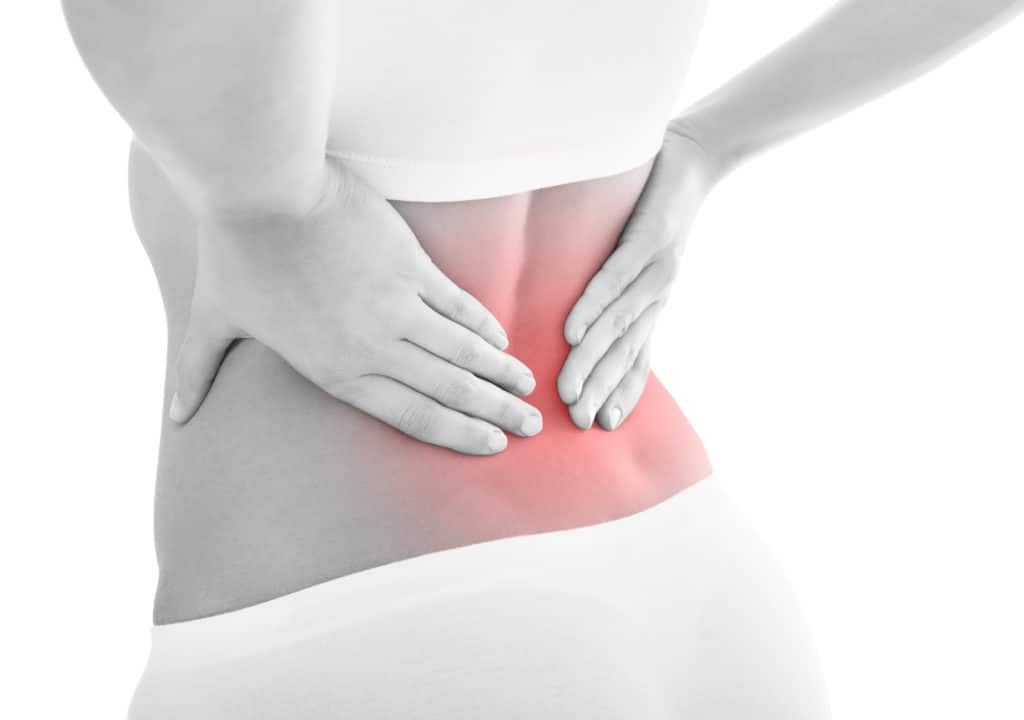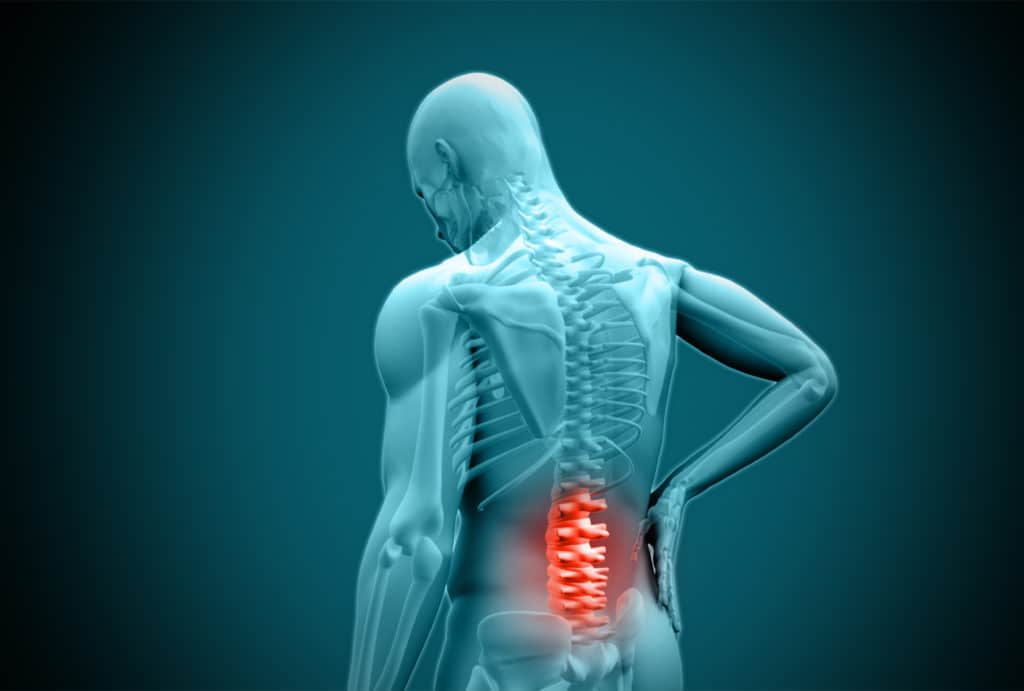
Is back pain keeping you awake at night?
Back pain can either be a low-level irritation or a serious medical issue, and it’s challenging to know the difference without a medical degree.
If you have back pain right now and you’re unsure whether you need to seek medical attention, please read on. We’ve put together an overview of how we diagnose and treat back pain at Intecore Physical Therapy.
The most important thing is not to worry because stress and tension make everything worse – particularly back, neck, and shoulder pain.
Relax. We’re here to help.
The likelihood is your back pain is not serious. It can be rectified quickly, either at home or at our Physical Therapy clinic, with no need for expensive medication, steroid injections, or a doctor’s visit.
Studies suggest that up to 80% of adults experience an episode of back pain in their lifetime, so you’re not alone. But there are lots we can do. You don’t have to put up with it.
There are many different treatments available for back pain. Some treatments you can do at home to ease the pain, while others need to be carried out by a medical professional or Physical Therapist. It depends on the type of back pain you have, and only your doctor or a Physical Therapist can determine that.
So, let’s take a look a more detailed look at the treatment and diagnosis of back pain to find the best course of action for your specific situation:
How Is Back Pain Diagnosed?

If you want to figure out how bad your back injury is – think about how easily you can carry out everyday activities such as lifting, walking, sitting, or standing.
- When you move, can you pinpoint where the pain is?
- How severe is the ache? Is it a dull, sharp, stabbing, or intermittent pain?
- Can you still workout? Lift your arms overhead? Bend forwards?
- Pick the kids up?
- When did it start? Is the pain recent, or have it had it for a while?
- Did something trigger it?
When you come to our clinic, these are the types of questions we ask to determine how severe your back injury is.
Your back is the area between your neck and your butt, which is quite an extensive region. It certainly is when it comes to the complexities of the human body. That’s for sure! Pain in the back could be problems with the spine, the back muscles, your sacrum or coccyx (at the bottom of your spine), or the nerves, tendons, and connective tissue that runs between them.
It could be referred pain from other areas of your body even more confusingly, such as the hips, pelvis, legs, or shoulder. But the location of your discomfort, the presence of any muscle spasms, knotted tissue, and your mobility are all important indicators of the type of injury you have.
Most commonly, in the clinic, we see patients with low back pain. This type of pain is most often associated with soft tissue injuries and muscle tears from over-zealous gym sessions. Think deadlifts, weights that are too heavy or lifted with incorrect form, or another twisting, pulling, or straining injury. It could even be more than a decade’s old injury. But that doesn’t mean we can’t fix it.
We also see lots of patients with pain and discomfort in the upper back, which can be chronic stress and tension or poor posture.
Usually, we quickly establish the root cause of your pain and treat it at the clinic. But if the injury is of concern, we may recommend an X-ray, scan, blood test, or EMG (electromyography) test first. These secondary investigations identify whether you have any broken bones, infections, or damage to discs, muscles, nerves, tendons, or tissues. On occasion, tests to investigate whether arthritis, osteoporosis or rarely, bone tumors could be at the root of the problem.
If you have any concerns about a back injury and your pain is severe, it is always best to seek medical attention. Small problems quickly turn into more severe damage without the right treatment. It is best to have your discomfort adequately assessed by a qualified medical professional as soon as you can.
What Is The Best Treatment For Back Pain?

Back pain is one of the most common complaints affecting people worldwide, so there are many treatments available to reduce pain and discomfort.
Remember to seek medical advice or check with a qualified Physical Therapist before carrying out treatments on yourself. This added precaution prevents the possibility of further damage.
Top treatments for back pain
- Pain relief: Pain relief for back pain comes in varying degrees of intensity. In many cases, well-known nonsteroidal anti-inflammatory drugs like Advil and Motrin are all you need to keep the pain at bay.
In some cases, your prescription may include a muscle relaxant such as Xanax or Diazepam to help you relax and ease the discomfort muscle spasms cause. In the case of severe or chronic, long-lasting pain, your doctor may prescribe drugs like amitriptyline and gabapentin, morphine, or other potent morphine-like drugs.
All of these drugs serve a purpose in certain situations. But you should avoid long-term use due to the potential adverse side effects.
Our mission at Intecore Physical Therapy is to find the root cause of your pain and help you stay active, fit, and free from painkillers – even if you’ve been in pain for many years.
- Heat Therapy: Hot or cold treatments are a popular and easy way to get fast pain relief. The type of heat treatment you need depends on the degree of injury you have. Some back injuries require a cold treatment, while other chronic conditions need heat therapy. Please read our blog about heat therapy to find out more.
- Nature: The human body has an innate capacity to heal. In many cases, relaxation, moderate activity, and targeted back exercises are all you need to help your back heal naturally. Relaxation helps reduce muscle tension and lessen the pain. Staying active helps with blood flow and will support your body’s natural healing processes. Pilates, walking, yoga, and swimming are great ways to combine relaxation and movement – without doing anything too strenuous that causes further damage. Alternatively, try some light, back strengthening exercises on your own at home – after you’ve consulted with a Physical Therapist or medical doctor to check for serious injuries.
- Physical Therapy: If your discomfort continues, we recommend you seek the assistance of an experienced Physical Therapist.
After an initial examination to pinpoint the cause of your back problems, we use hands-on therapy to reduce pain and restore blood flow and mobility. We also advise you on avoiding more back pain and give you a set of bespoke exercises you can do at home.
- Surgery: For most people, back pain last for a few weeks to a few months at the most. However, from time to time, when a back injury is particularly severe, surgery may be necessary. Slipped discs or sciatica are some of the most frequent reasons people undergo surgery for a back injury. But this is always a last resort if all other pain relief has been unsuccessful.
In situations where the pain spreads to your leg, cortisone injections may target pain in the roots of your nerves. The anti-inflammatory cortisone injection is given alongside medication to numb the area around your spine. But by consulting with a Physical Therapist, most of our patients avoid having to undergo painful surgery.
How To Treat Back Pain

We’ve covered some of the most popular treatments for back pain. But the most important thing to do before you do anything else is to have the specifics of your injury diagnosed by a Physical Therapist or medical professional.
Don’t be tempted to self-diagnose or experiment with treatments at home using Dr Google or YouTube. Please don’t base your presumptions on misinformation that’s rife throughout online forums. Testing out treatments without the guidance of a professional can cause more damage and even more pain. It’s not worth it. The internet is full of people masquerading as healthcare professionals.
So, if you’re in pain now, don’t suffer in silence or put off getting treatment. Why not book a free call to talk to one of our Physical Therapists? We’ll talk through the problems you’re having and put your mind at ease.
With a selection of clinics to choose from in Belfair, Bremerton, and Poulsbo, you may prefer to try one of our taster sessions. These complimentary 30-minute Discovery Sessions are a great way to get started. Come and visit one of our three Physical Therapy Clinics in Washington to meet the team, view our facilities, and talk to a Physical Therapy 1:1 before committing to further treatment. And if you commit, your therapy sessions will be tailored to your exact situation.
For instant pain relief, download our Free Report: “The 14 Best Kept Secrets For Eliminating Back Pain, Staying Pain-Free And Avoiding Dangerous Spinal Surgery”.
We look forward to hearing from you, and getting you back to health!
- Top 5 Misconceptions About Back Pain and How to Avoid Them - July 21, 2024
- 6 Surprising Ways Stress Causes Back Pain and How to Manage It - July 14, 2024
- Is Walking Good for Sciatica? What You Need to Know - July 7, 2024










